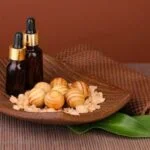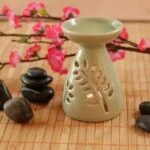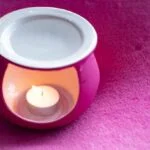Aromatherapy has been gaining popularity in recent years as more people seek natural and holistic ways to improve their overall well-being. Aromatherapy diffusers have become a popular tool for enjoying the benefits of essential oils. These devices are designed to disperse the aroma of essential oils into the air, creating a calming and therapeutic environment in homes, offices, and wellness centers.
Aromatherapy diffusers are widely used for their ability to promote relaxation, improve sleep quality, relieve stress, and boost mood. But can you use an aromatherapy diffuser without the essential oils? This question has sparked curiosity among individuals who may be interested in using a diffuser but are hesitant to invest in essential oils right away.
While essential oils are typically used with aromatherapy diffusers, there are alternative ways to enjoy the benefits of these devices. Whether it’s for fragrance purposes or as a humidifier, using a diffuser without essential oils can still offer advantages. In this article, we will explore the role of essential oils in aromatherapy, the potential benefits of using a diffuser with and without essential oils, and alternative uses for these versatile devices.
Understanding the Role of Essential Oils in Aromatherapy
Essential oils are the cornerstone of aromatherapy, playing a crucial role in providing therapeutic benefits to individuals. These oils are highly concentrated extracts from plants, flowers, and herbs, and each type of essential oil possesses unique properties that contribute to overall well-being. When used in an aromatherapy diffuser, these essential oils are dispersed into the air, allowing individuals to inhale the beneficial properties and experience their healing effects.
The Healing Power of Essential Oils
One of the key reasons why essential oils are indispensable in aromatherapy is their ability to promote relaxation, reduce stress, and uplift mood. For example, lavender essential oil is known for its calming properties, making it an ideal choice for relieving anxiety and promoting better sleep. On the other hand, peppermint essential oil can help alleviate headaches and boost energy levels. Each essential oil has its own set of therapeutic benefits that contribute to the overall effectiveness of aromatherapy.
Aromatherapy Diffusers and Essential Oils
Aromatherapy diffusers work by dispersing tiny molecules of essential oils into the air, allowing them to be easily inhaled and absorbed by the body. The process of diffusion ensures that individuals can maximize the benefits of essential oils for various health concerns.
Whether it’s enhancing mental clarity, improving respiratory function, or creating a refreshing atmosphere in a living space, using a diffuser with essential oils is often considered a non-invasive yet effective way to incorporate aromatherapy into daily life.
It is important to note that while using an aromatherapy diffuser without essential oils can still create a pleasant aroma in a room due to mist or steam produced by the diffuser equipment, you will not be able to enjoy the full range of therapeutic benefits associated with aromatherapy if you choose not to use essential oils.
The absence of essential oils means missing out on their potential healing properties and may limit your overall experience with the practice of aromatherapy.
Benefits of Using Essential Oils in Aromatherapy Diffusers
Using essential oils in aromatherapy diffusers offers a wide range of benefits for both physical and mental well-being. Here are some of the key advantages of using essential oils in aromatherapy diffusers:
- Improved Mood: Certain essential oils such as lavender, bergamot, and ylang-ylang are known for their mood-boosting properties. When diffused, these oils can help create a calm and uplifting atmosphere, reducing feelings of stress and anxiety.
- Respiratory Support: Eucalyptus, peppermint, and tea tree essential oils have been traditionally used to support respiratory health. When diffused, these oils can help clear congestion and promote easier breathing.
- Enhanced Sleep Quality: Diffusing calming essential oils like chamomile, sandalwood, and cedarwood before bedtime can promote relaxation and improve sleep quality. These oils can create a soothing bedtime routine that can lead to a more restful night’s sleep.
By utilizing essential oils in aromatherapy diffusers, individuals can experience these wellness benefits while enjoying the pleasant aroma of natural plant extracts.
However, it is important to note that while essential oils offer numerous advantages when used in aromatherapy diffusers, there may be unforeseen consequences if the diffuser is used without the essential oils.
- Without the use of essential oils, the humidifying function of the diffuser may not work effectively or may cause damage over time due to lack of lubrication from the oil.
- In addition to this, using a dry diffuser continuously without any oil may also result in an unpleasant odor after prolonged use.
Therefore it is highly recommended that individuals do not use an aromatherapy diffuser without the accompanying essential oil for optimal product performance and user satisfaction.
Can You Use a Aromatherapy Diffuser Without the Essential Oils?
Aromatherapy diffusers have become increasingly popular for their ability to disperse essential oils into the air, creating a pleasant and therapeutic atmosphere. These devices are used for various purposes such as relaxation, stress relief, improved sleep, and even boosting mood. However, there is a common question that arises among users: can you use an aromatherapy diffuser without the essential oils?
The answer to this question is yes, you can use an aromatherapy diffuser without the essential oils. In fact, many people use diffusers solely for the purpose of adding moisture to the air in their home or workspace. This can be particularly useful during dry winter months or in arid climates where humidity levels tend to be low.
Using an aromatherapy diffuser without essential oils can also help to neutralize odors in a room and create a more pleasant environment. Some individuals may simply enjoy the gentle sound of the diffuser as it operates or appreciate the soft ambient lighting that some models provide. Additionally, using a diffuser without essential oils can still offer benefits such as adding moisture to indoor air, which can help alleviate dry skin, respiratory issues, and other discomforts associated with low humidity levels.
Benefits of Using Aromatherapy Diffusers Without Essential Oils
| Benefit | Description |
|---|---|
| Increased Humidity | Helps alleviate dry skin and respiratory issues caused by low humidity levels |
| Oder Neutralizer | Can help neutralize unpleasant odors in a room |
| Pleasant Ambiance | The soft sound and ambient lighting of some diffusers can create a soothing atmosphere |
Advantages and Disadvantages of Using Aromatherapy Diffusers Without Essential Oils
Using an aromatherapy diffuser without essential oils comes with both advantages and disadvantages. It is important to understand the potential benefits and drawbacks before deciding to use a diffuser in this way.
Advantages:
- Humidifying the air: A diffuser can still be used to add moisture to the air, which can be especially beneficial in dry climates or during the winter months.
- Improving air quality: Even without essential oils, a diffuser can help to purify the air by releasing negatively charged ions that help to remove dust, allergens, and other particles.
- Creating a calming atmosphere: Some people enjoy the soft sound of the diffuser and the gentle mist it produces, which can contribute to a relaxing environment.
Disadvantages:
- Lack of aromatherapy benefits: Without essential oils, you won’t experience the potential mood-boosting or therapeutic effects that are typically associated with aromatherapy.
- Potential for buildup: Using a diffuser without essential oils may lead to a buildup of residue from tap water or other substances, which could affect the performance of the device over time.
- Diminished scent control: If you choose to use essential oils later on, using a diffuser without them initially may make it more difficult to control and adjust the scent intensity in your space.
Considering these factors can provide insight into whether using an aromatherapy diffuser without essential oils aligns with your personal preferences and needs. If you decide to explore this option, there are certain tips and alternative uses that can help optimize your experience.
Alternative Uses for Aromatherapy Diffusers Without Essential Oils
Aromatherapy diffusers are commonly used with essential oils to disperse their therapeutic scents throughout a room. However, there are alternative uses for aromatherapy diffusers that do not involve the use of essential oils. This section will explore some creative and practical ways to utilize aromatherapy diffusers without using essential oils.
Humidifying the Air
One alternative use for aromatherapy diffusers without essential oils is to simply use them as humidifiers. By adding water to the diffuser’s reservoir and turning it on, the device releases a fine mist into the air, increasing the humidity in the surrounding environment. This can be especially helpful in dry climates or during the winter months when indoor heating systems can cause the air to become overly dry.
Adding Fragrance-Free Freshness
Another way that an aromatherapy diffuser can be used without essential oils is as a method for adding freshness to a room without any added fragrance. Simply fill the diffuser with water and run it as usual, leaving behind a gentle mist that can help neutralize odors and create a clean, fresh atmosphere without any added scent.
Creating a Relaxing Ambiance
Even without essential oils, an aromatherapy diffuser can still be used to create a relaxing ambiance in any space. The soft sound of running water and subtle mist produced by the diffuser can contribute to an overall sense of calm and tranquility, making it a useful addition to meditation or yoga practices. Additionally, some people find that simply running an empty diffuser can help promote a peaceful environment conducive to rest and relaxation.
Tips for Using Aromatherapy Diffusers Without Essential Oils
Many people wonder if they can use an aromatherapy diffuser without the essential oils. The answer is yes, you can still use an aromatherapy diffuser even without adding essential oils to it. The diffuser will still function as a regular humidifier, providing moisture to the air in your space. However, it won’t have the added benefits of providing aromatic and therapeutic effects that essential oils are known for.
One of the main tips for using an aromatherapy diffuser without essential oils is to make sure that you clean the device regularly. Without the antimicrobial properties of essential oils, there is a risk of mold and bacteria growth in the water tank of the diffuser. To prevent this, be diligent about cleaning and drying your diffuser after each use. This will help maintain air quality in your space.
Another tip is to consider using distilled water instead of tap water when using your diffuser without essential oils. Distilled water has fewer impurities and minerals compared to tap water, which can help prevent buildup in your diffuser over time. This can also help ensure that the mist produced by the diffuser remains clean and pure.
Conclusion
In conclusion, while it is technically possible to use an aromatherapy diffuser without the essential oils, it is not recommended. Essential oils play a crucial role in aromatherapy and are the primary reason for using a diffuser. They are responsible for providing the therapeutic benefits associated with aromatherapy, such as stress relief, improved sleep, and mental clarity. Without essential oils, the diffusion process would serve no purpose and would simply be dispersing water into the air.
Additionally, using an aromatherapy diffuser without essential oils may also result in damage to the diffuser itself. Essential oils are often used to clean and maintain diffusers, as they can help remove residue and prevent mold growth. Without the presence of essential oils, the diffuser may become clogged or develop issues over time.
Ultimately, while there may be alternative uses for aromatherapy diffusers without essential oils, such as adding humidity to a room or simply enjoying the visual appeal of the mist, their intended purpose is to disperse essential oils for therapeutic benefit. Therefore, it is best to use aromatherapy diffusers as intended with the appropriate essential oils for a truly beneficial experience.
Frequently Asked Questions
Does Aromatherapy Have to Be Essential Oils?
Aromatherapy does not necessarily have to be through essential oils, but it is the most common method. Other forms of aromatherapy include using fragrant herbs or flowers in various ways.
Do You Use Essential Oils in Diffusers?
Yes, essential oils are commonly used in diffusers for aromatherapy purposes. The diffuser disperses the scent of the oil throughout the room, creating a pleasant and relaxing atmosphere.
Can You Use an Aroma Diffuser as a Humidifier?
While an aroma diffuser can add moisture to the air, it’s not the same as a humidifier. A humidifier is specifically designed to increase humidity levels in a room, while an aroma diffuser focuses on dispersing essential oils for aromatherapy purposes.

Are you looking for a natural way to improve your health and wellbeing?
If so, aromatherapy may be the answer for you.





